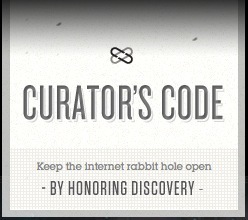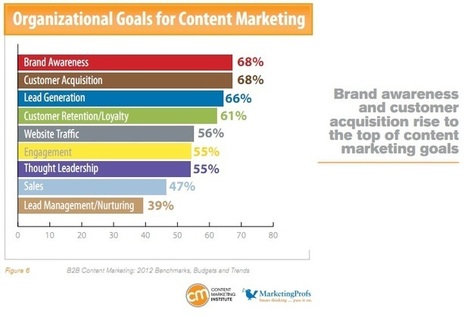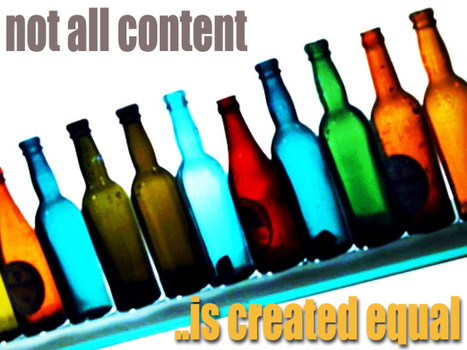Robin Good curated this article and provided the following summary and commentary:
: Maria Popova has just launched a classy and laudable initiative, focused on increasing awareness and in highlighting the importance of honoring always where or via who you have got to a certain article, report, video or image.
Credit and attribution are not just a "formal" way to comply with rules, laws and authors but an incredibly powerful emebddable mechanism to augment findability, discovery, sinergy and collaboration among human being interested in the same topic.
She writes: "In an age of information overload, information discovery — the service of bringing to the public’s attention that which is interesting, meaningful, important, and otherwise worthy of our time and thought — is a form of creative and intellectual labor, and one of increasing importance and urgency.
A form of authorship, if you will.
Yet we don’t have a standardized system for honoring discovery the way we honor other forms of authorship and other modalities of creative and intellectual investment, from literary citations to Creative Commons image rights."
For this purpose Curator's Code was created.
Curator's Code is first of all "a movement to honor and standardize attribution of discovery across the web" as well as a web site where you can learn about the two key types of attribution that we should be using:
a) Via - which indicates a link of direct discovery
b) Hat tip - Indicates a link of indirect discovery, story lead, or inspiration.
Each one has now a peculiar characterizing icon that Curator's Code suggests to integrate in your news and content publication policies.
Additionally and to make it easy for anyone to integrate these new attribution icons in their work, Curator's Code has created a free bokkmarklet which makes using proper attribution a matter of one clic.
Hat tip to Maria Popova and Curator's Code for launching this initiative.
Whether or not you will sign Curator's Code pledge, become an official web site supporting it, or adopt its bookmarklet instantly is not as important as the key idea behind it: by providing credit and attribution to pieces of content you find elsewhere, you not only honestly reward who has spent time to create that content, but you significantly boost the opportunity for thousands of others to connect, link up to, discover and make greater sense of their search for meaning.
Read Maria Popova introductory article to Curator's Code: http://www.brainpickings.org/index.php/2012/03/09/curators-code/
How to use the Curator's bookmarklet: http://vimeo.com/38243275
Healthy. Inspiring. 9/10
Curator's Code official web site: http://curatorscode.org/
N.B.: Too bad that the Curator's Code bookmarklet doesn't work with Scoop.it, as the one excludes the other. But you could save the two codes for the special attribution characters in a text note and copy and paste whicever you need. Given the need for simplicity and integration this is not an ideal solution but I am sure that between Maria and Guillaume at Scoop.it they will find a way to make this work easily for all. Maria and Guillaume: what do you say?
Note from Beth Kanter: I originally discovered this post ᔥ Barbara Bray but traced it back to the original source Robin Good to rescoop it because I think it is important to give credit to the curator who discovered it. To do this takes a little bit of extra time but it slows me down so I read the post, understand it, and give credit to the curator and source.
What about you? Do you rescoop it from the collection where your found it or do you look for the original curator who discovered it and give credit there?
Via Robin Good



 Your new post is loading...
Your new post is loading...



![Curating Information & Making Sense of Data Is a Key Skill for the Future [Research] | Content and Curation for Nonprofits | Scoop.it](https://img.scoop.it/KrkxRVnH-00QDsqHCUKTTTl72eJkfbmt4t8yenImKBVvK0kTmF0xjctABnaLJIm9)










I am disappointed that the bookmarklet doesn't work together with the scoop.it one - but it would be great to have it integrated. Now to figure out how to rescoop it with the characters.
Re the integration of the curators' code icons, I have received feedback from Guillaume De Cugies of Scoop.it that he has been exchanging with Maria Popova and that he is looking with her for a way to integrate the two.
For now you can simply install the Curators' Code bookmarklet and use the "via"<a href="http://www.curatorscode.org" target="_blank" style="font-family:sans-serif;text-decoration:none" >ᔥ</a> or hat tip <a href="http://www.curatorscode.org" target="_blank" style="font-family:sans-serif;text-decoration:none" >↬</a> icons by copying and pasting their code into your scoops manually. The problem, at least for me is, that the scoop.it editing window is in the same position where the Curators' Code bookmarklet is and therefore I can't see both at the same time.
In any case I think it would be trivial for Scoop.it or any other tool to integrate such buttons directly into their system without having us to use two different tools for one task.